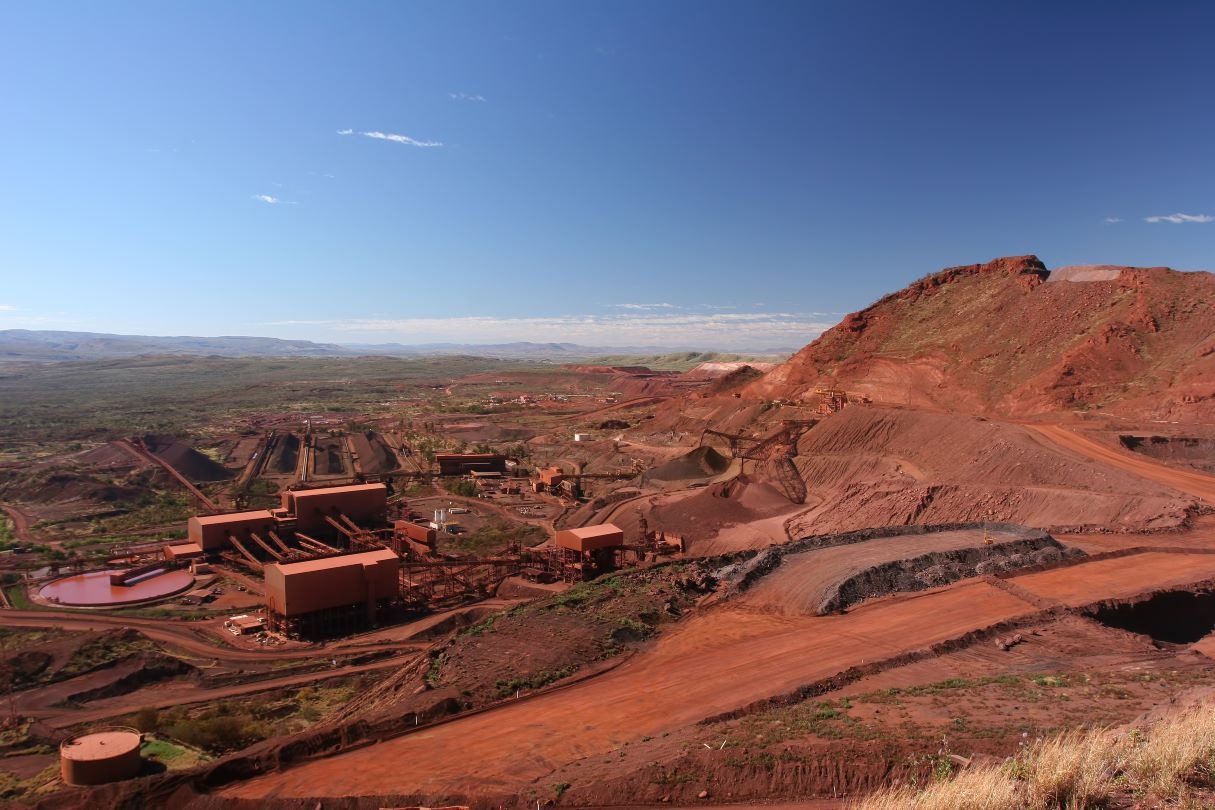Comment
Water management in the Pilbara – time for a more strategic approach?
Bob Kinnell, manager of water strategy and sustainability at GHD, argues it is time to take a more strategic approach to water management in the Pilbara region of Western Australia (WA).

Approaches to water management are changing in the Pilbara region of WA. Credit: Tim Pryce / Shutterstock
The story of the Pilbara area of WA is one of spectacular expansion of the iron ore industry, from less than 200 million tonnes (mt) in 2002/03 to more than 800mt in 2017/18.
Expanding iron ore production in such a relatively short period of time required the development of large orebodies below the water table. This, in turn, required large dewatering operations and the production of a large surplus of good quality water across the Pilbara.
This rapid expansion, effectively “chasing the market”, necessitated a tactical mindset to project development where risks to delivery of iron ore for export were mitigated and managed to meet the development timeline. New mines were brought online quickly and water needed to be removed to access ore below the water table. What happened to the water once it was pumped out was less of a consideration if regulatory approvals were met.
Water abstraction from mining in the Pilbara region was [estimated at] around 550 gigalitres (GL) per year.
A 2015 report by the Commonwealth Scientific and Industrial Research Organisation estimated that water abstraction from mining in the Pilbara region was around 550 gigalitres (GL) per year. Approximately 45% of this water (250GL/year) was used for ore processing, dust suppression, consumption and other purposes, according to the report, with the remainder being generally disposed of to the previously ephemeral creek systems. By comparison, the Perth metropolitan area, the south west and the Goldfields, where most of Western Australia’s population lives, use 310GL annually.
Mining in the Pilbara has now entered a sustaining phase where closure studies are as prevalent as development studies. This more balanced state raises the question of practices, focus and outcomes being at a tipping point in the Pilbara’s water management story. Is this now a point of transition from the legacy of a tactical approach to a more strategic one?
Water resources in the Pilbara
Water resources in the Pilbara are large and of good quality. However, they are very old, which implies a natural cycle of limited recharge and low discharge. The long-term result of dewatering at rates greater than recharge has been in effect a “mining” of water.
A shift in the perception of water as a waste product to a precious resource is required, with an emphasis on the highest-value use case. While discharge to local creeks and other water bodies has been the preferred approach in the past, and other uses such as agriculture have had some success, alternatives such as managed aquifer recharge are now becoming commonplace. This trend is being driven by a greater realisation of the impacts of dewatering, alongside a bigger focus on meeting the objectives of the 2013 Water in Mining Guideline.
Where long-term creek discharge has resulted in previously ephemeral ecosystems becoming perennial, both operators and regulators need to consider and plan for these ecosystems becoming ephemeral again when the mines close and the dewatering ends.
Future realities such as these drive a more strategic approach that really takes into consideration the economic, environmental, social and cultural value of water.

Iron ore mining operations in the Pilbara consume significant amounts of water. Credit: STRINGER Image / Shutterstock
Breaking boundaries: a new approach to water management
One of the biggest challenges to this strategic approach is that water knows only natural boundaries. Much of the research, water management and planning are more effective when done at a catchment scale. Until relatively recently (and due to the structure of the regulatory environment), mining companies have been restricted to focusing research efforts on their individual tenement packages. This did not create an appetite for collective solutions.
There has been a mindset shift, both at a global level and within the Pilbara.
Fortunately, there has been a mindset shift, both at a global level and within the Pilbara. For example, the International Council on Mining and Metals has developed a Water Stewardship Framework, which includes a catchment-based approach to water management.
Desire for a more strategic approach to water management in the Pilbara comes with greater complexity. Such a mindset needs to be supported by tools that can adapt to a range of potential scenarios.
Robust and flexible water management strategies
One such approach, Adaptive Pathways Planning, supports the development of robust and flexible long-term strategies and water management plans that can respond to future change and uncertainty.
The approach begins with big picture thinking, considering a variety of future scenarios, alongside a wide range of demographic, economic, environmental, political, social and technology trends and potential shocks/disruptions.
Mining companies in the Pilbara develop three products: ore, water and waste.
A preferred option pathway, made up of actions sequenced over time, is chosen. This can be either ‘robust,’ meaning that it performs well against a range of future conditions, and/or ‘flexible’ to change if the future unfolds differently.
By encouraging miners to consider and plan for multiple futures, this approach helps them understand the Pilbara operating environment and how short-term actions can limit longer-term options.
Mining companies in the Pilbara develop three products: ore, water and waste. There is currently only economic value in one of these products. However, by taking a strategic, adaptive approach to water management, there is the potential to realise some value from the water in the Pilbara, opening up more economic, social and environmental opportunities for a long time to come.

Bob Kinnell. Credit: GHD
About the author: Bob Kinnell is a geoscience management professional with more than 30 years’ experience with leading professional services, mining and consulting companies. He has a proven track record in understanding water risk in mining and the mitigation of those risks through the development and implementation of operational mine water management strategies. Kinnell has worked in Australia, New Caledonia, Europe, South America and Asia.